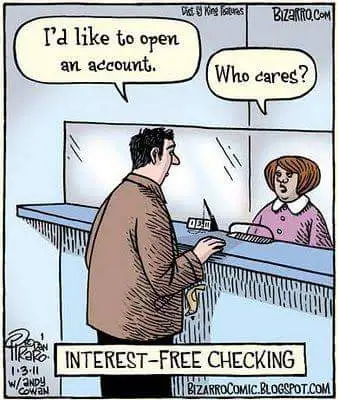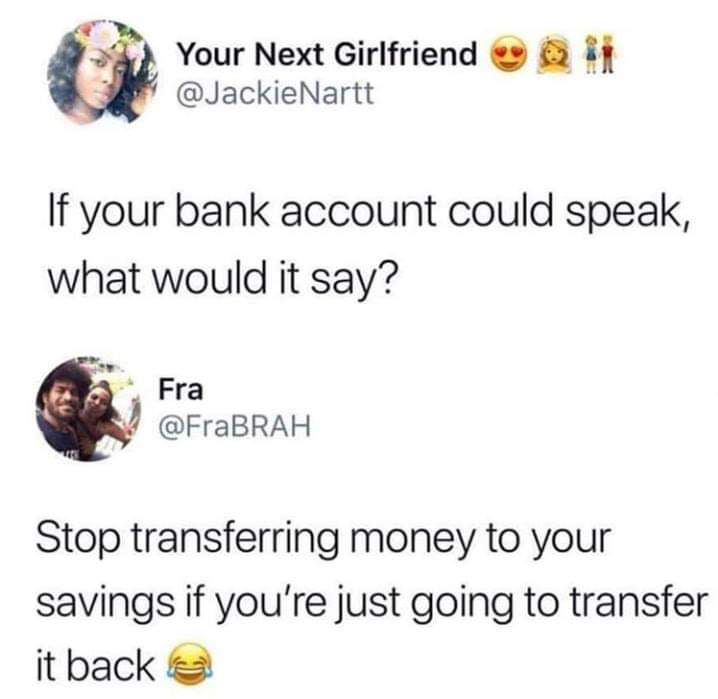I don't consider myself an expert on anything finance related. There are a lot of advanced concepts in stock trading that I'm ignorant to, and there are many aspects of my finances that are sub-optimal. That being said, I have a very solid understanding of the basics of personal finance, and feel well-suited to give generic advice. After a few conversations with family and friends, I've learned my advice might be useful for them to help frame their financial journeys.
This article is meant to be a quick-and-dirty guide for healthy personal finance. It breaks things down into simple steps. Start with the first one, and then come back later once that's done. This article isn't going to be a lesson on how to optimize your finances, or how to grow your empire. It's how to put in the absolute minimum effort, and get the maximum reward. Much of my advice focuses on "set it and forget it" style of finances. While not completely optimal, it reduces the time you have to spend thinking about it, and makes finances easier to handle.
Before jumping into it, I'd like to say that personal finance is...well, personal. There are always trade-offs, usually weighing risk vs. reward. And deciding how risky to be is entirely dependent on your personal circumstances.

Step One: Track Your Money
Bare Minimum
Gathering information is the first step to take, and you need to know exactly where your money is going. I recommend whatever you find easiest and most intuitive. I use a spreadsheet, and log my expenses at the end of the month. You can be as detailed as you want, but at the bare minimum you should be jotting down big things: your income, rent, bills, groceries, etc.
Extra Credit
Dive into the details! The more information you keep track of, the better you can budget and forecast expenses. You can later use these numbers to figure out how much rent you can actually afford, or how much you should be saving for retirement. I use an app called FastBudget, which lets you configure a few budget pools (bills, groceries, fun, etc.). It has a focus on adding expenses fast. This means that I can check out at the grocery store, and before my card is done processing, I can log how much I spent in the app. There's also apps that do the pooling and everything for you, such as You Need A Budget.

Step Two: Emergency Savings
Bare Minimum
Create an emergency savings account. You should save three to six months of your typical monthly expenses, depending on your level of risk tolerance. This is for the worst case scenarios, like losing your job or getting a big medical bill. It's your financial safety net.
Extra Credit
You should put this money in a "High Yield Savings Account," which is a fancy way of saying the bank will give you more than a few pennies for parking your money with them. Websites like NerdWallet will give you an idea of current rates. Don't worry about small fluctuations like 0.5%, those don't matter too much.

Step Three: Retirement Planning
Bare Minimum
At this point, you should have a solid idea of where your money is going (from step one) and have a good emergency safety net (step two). You now need to figure out how much disposable income you have. In other words, how much money do you have left over after you're done...just, like, surviving? For instance, you might make $2400 per month after taxes. And all of your "just surviving" bills such as rent, groceries and utilities are $1800 per month. That means you have $600 left over for whatever else you'd like to spend it on. Congrats! Take a percentage of your disposable income, usually 15%, and start putting it aside for retirement.
Ideally, you have an employer who gives you 401k benefits. If you don't know that, talk with your company's HR. It's their job to help you with this! If your employer doesn't offer a 401k account, then you'll need to start a retirement account on your own. This isn't any harder than opening a bank account. The two biggest companies are Charles Schwab and Vanguard. You will likely want to open a Roth IRA account, which is an individual retirement account (IRA).
Once you have an account and are depositing money into it, you need to configure the account to invest that money. There are very, very few reasons to get fancy with this step. Instead, calculate what year it will be when you turn 65. And then invest that money into your broker's Target Date Fund which is closest to that year. For instance, there's Vanguards Target Funds. That's it - just set it and forget it.
Extra Credit
The first bit of extra credit is knowledge-based. First, you can read more about how target date funds work. It's not an overly complicated idea. The next bit of extra credit here is to sit down and do some math. You can use online calculators to get a rough idea of how much you'll want in retirement. Knowing these numbers better prepares you for retirement, and helps you figure out if you're on track. Remember, nothing is an exact number. But use those tools to give yourself a ballpark idea of what you should be aiming for.

Step Four: Further Investment
If you made it this far, congrats! You're doing better than the vast majority of the world. It's truly an accomplishment. What you do with any leftover money at this point is largely up to you, and I can't really help much on that front. But here are some common financial stuff that you might consider:
- Real estate. This one is fairly straightforward. Start saving up to put a down payment on your first home, or an investment property. This should probably be in another high-yield savings account.
- Stock markets. While somewhat volatile, they almost certainly pay off in the long run. The traditional, low-hassle advice is to invest in funds such as SWTSX, which attempts to track the total market.
- Bonds & CDs. These are very conservative investments, that essentially guarantee a return rate. You are essentially loaning the US government money at a small percentage of interest, and they pay you back later.
- Increase savings. I'd recommend adding some buffer to your emergency funds, and then putting more into retirement.
